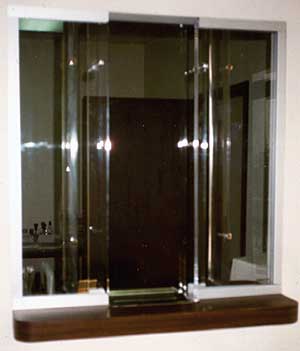Designing Bullet Resistant Protection Panel Systems: Capture More than the Imagination
Ratings are given to materials that are tested with various weapons ranging from Level 1 the lowest to Level 8. This range is determined by lower velocity handguns at Level 1 to Level 8 is for military rounds. Appropriately, all testing, for any Level designation, has certain criteria that must be met. Meeting this strict criteria will never change; will ultimately not adversely affect Level ratings.
UL ratings are a constant with criteria including some of the following:
- The power range is determined by muzzle energy to foot-pounds. This range goes from low to high.
- UL consistently tests at three room temperatures, extreme heat, and room temperature and extreme (freezer) cold.
- The tested samples are consistently 12" x 12" in size.
- The material is shot from fifteen feet and the required velocity exceeds "off the shelf" ammunition.
- The number of shots in each test is determined by the Level being tested.
When using other laboratories, such as H.P. White, each typically tests to what is specified either by the manufacturer or designer. One example of this approach can be applied to Level 1, fiberglass. H.P. White says Level 1 is able to stop a .38 Special handgun, the type normally carried by police officers. UL's Level I will stop a .9mm or a .38 Special handgun. The difference is that H.P. White critera is different and only uses lower velocities, only uses 1 round, but also shoots from 20 feet, five feet further away than UL's standard 15 feet. The UL rating system has effectively raised the bar on industry standards. The security program designers might ask, "Which panel would you prefer to stand behind in the event of a shooting?" The answer is always the rated panel because of the higher standards in testing.
 |
| Washington Mutual Bank, Vertical Offset Design, UL-752 Polycarbonate Photo credit: Bullet Guard |
Levels 1-3 are the most commonly used Levels specified. Security concerns include the threat posed by a concealed handgun. Handguns such as .38, 9mm or .357 Magnum easier to conceal than rifles. According to the FBI, 80% of all robberies are committed with lower powered handguns. Because .38 Special and 9mm handguns are so inexpensive and easily obtained and concealed, they are generally the weapons of choice for most perpetrators. Regardless of the variety of weapons portrayed in the movies, most actual robberies and work related violence is committed with one of these weapons.
ASTM (American Society for Testing and Materials) certifies material to be both bullet resistant and Intrusion Resistant. There are 3 classes or levels for Intrusion Resistant materials. The Class or Level is determined during the testing process by how many "steps" it successfully withstands. The more "steps " it passes, the higher its rating. ASTM uses the word Class instead of Level as their classification denominator.
When the main goal is to protect against damage done by means other than guns, the materials may be requested to meet Intrusion or Attack tests. Materials are rated by the type of force being applied to them with various tools such as crowbars and sledgehammers. The protocol followed by those involved in specifications in the security industry is no intrusion or attack tests should be performed using ballistic weapons, due to the confusion of performance expectations of the purchaser. Those agencies that use weapons in these tests are using extremely low velocities that do not compare with accepted bullet resisting velocities. For example, if the intrusion resistant material was tested with a .38 caliber handgun purchasers may conclude it is a bullet resistant material.









